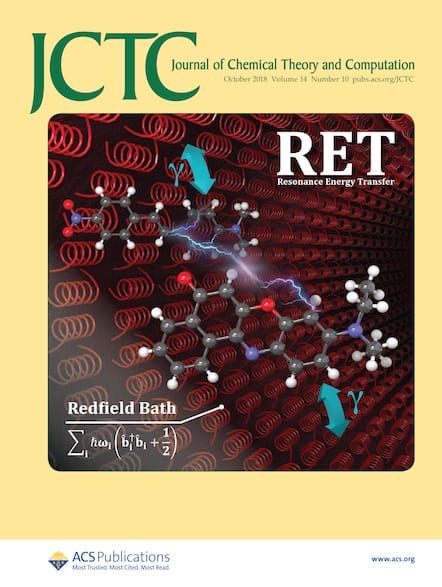An Improved Virtual Orbital Driven Similarity Renormalization Group Approach for Core-Ionized and Core-Excited States.
IF 5.7
1区 化学
Q2 CHEMISTRY, PHYSICAL
引用次数: 0
Abstract
This work combines the multireference driven similarity renormalization group (DSRG) with a reference state obtained using improved virtual orbitals (IVOs) and generalized active space configuration interaction (GASCI) to model core-ionized and core-excited states without costly orbital optimizations. We test the accuracy of the resulting IVO-GASCI-DSRG method combined with three truncation levels across four data sets of molecules containing first-row elements (small molecules, potential energy surfaces, small-to-medium molecules, and X-ray absorption spectra). It is found that the IVO-GASCI-DSRG approach with an active space consisting of three GAS spaces and third-order perturbative corrections (IVO-GASCI[3]-DSRG-MRPT3) strikes the best balance between cost and accuracy. This method exhibits good agreement with the most accurate DSRG truncation scheme based on self-consistent orbitals on small-molecule benchmarks, and it is capable of accurately predicting the potential energy surfaces of core-excited and core-ionized states of CO, N2, and HF. To demonstrate the applicability of this method to medium-sized molecules, we simulate the X-ray absorption spectra of thymine and adenine using IVO-GASCI-DSRG-MRPT3, successfully reproducing key experimental spectral features.核电离态和核激发态的改进虚拟轨道驱动相似重正化群方法。
本研究将多参考驱动的相似重整化群(DSRG)与利用改进的虚拟轨道(IVOs)和广义主动空间构型相互作用(GASCI)获得的参考状态相结合,在没有昂贵的轨道优化的情况下对核心电离态和核心激发态进行建模。我们测试了所得到的IVO-GASCI-DSRG方法的准确性,该方法结合了包含第一行元素(小分子、势能面、中小分子和x射线吸收光谱)的四个数据集的三个截断水平。研究发现,由三个GAS空间和三阶微扰修正组成的主动空间(IVO-GASCI[3]-DSRG-MRPT3)的IVO-GASCI- dsrg方法在成本和精度之间达到了最好的平衡。该方法与基于自一致轨道的最精确的DSRG截断方案在小分子基准上具有良好的一致性,能够准确预测CO、N2和HF的核心激发态和核心电离态的势能面。为了证明该方法对中等分子的适用性,我们使用IVO-GASCI-DSRG-MRPT3模拟了胸腺嘧啶和腺嘌呤的x射线吸收光谱,成功地再现了关键的实验光谱特征。
本文章由计算机程序翻译,如有差异,请以英文原文为准。
求助全文
约1分钟内获得全文
求助全文
来源期刊

Journal of Chemical Theory and Computation
化学-物理:原子、分子和化学物理
CiteScore
9.90
自引率
16.40%
发文量
568
审稿时长
1 months
期刊介绍:
The Journal of Chemical Theory and Computation invites new and original contributions with the understanding that, if accepted, they will not be published elsewhere. Papers reporting new theories, methodology, and/or important applications in quantum electronic structure, molecular dynamics, and statistical mechanics are appropriate for submission to this Journal. Specific topics include advances in or applications of ab initio quantum mechanics, density functional theory, design and properties of new materials, surface science, Monte Carlo simulations, solvation models, QM/MM calculations, biomolecular structure prediction, and molecular dynamics in the broadest sense including gas-phase dynamics, ab initio dynamics, biomolecular dynamics, and protein folding. The Journal does not consider papers that are straightforward applications of known methods including DFT and molecular dynamics. The Journal favors submissions that include advances in theory or methodology with applications to compelling problems.
 求助内容:
求助内容: 应助结果提醒方式:
应助结果提醒方式:


